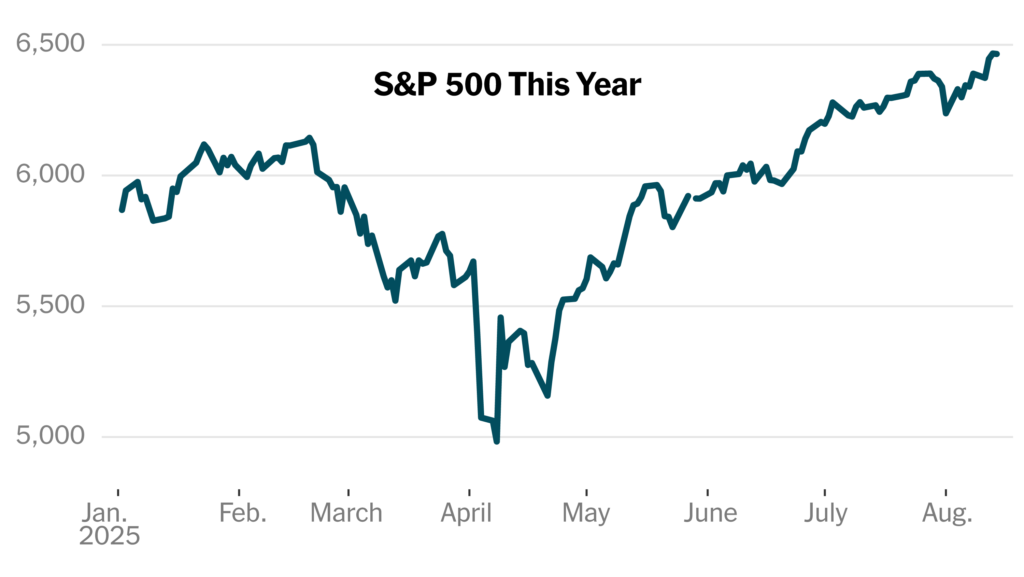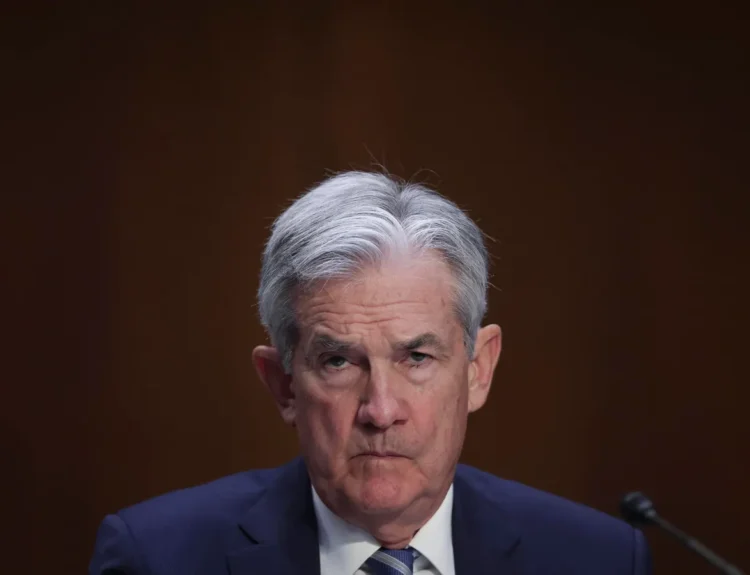Strong earnings, resilient big tech, and easing uncertainty are keeping the stock market rally alive — for now.
The S&P 500 is defying expectations, hitting fresh all-time highs even as US import tariffs stand at their highest levels since the 1930s and the political feud between President Trump and Federal Reserve Chair Jerome Powell heats up.
The index has not only recovered from April’s tariff-induced sell-off but now sits more than 5% above its February peak and nearly 10% higher year-to-date. The rally is powered by strong corporate earnings, a surprisingly resilient economy, and big tech’s continued dominance — all helping offset tariff concerns.

Earnings Season Calms Fears
FactSet data shows average earnings growth across the S&P 500 reached double digits for the third straight quarter, with tech giants leading the charge. While energy and manufacturing remain under pressure, most large companies report that tariffs are manageable.
“This earnings season has allayed a lot of fears,” says Nelson Yu, head of equities at Alliance Bernstein.
More Clarity, More Optimism
At the end of Q1, only 17% of S&P 500 companies raised forward guidance. This quarter, over 40% did — citing improved visibility despite tariff uncertainty.
Citi, Bank of America, Goldman Sachs, and Deutsche Bank have all lifted their year-end S&P 500 targets, although most now cluster around current levels — suggesting slower gains ahead.
Small Caps Lag Behind
The Russell 2000 — made up of smaller companies more exposed to tariff costs — has only just turned positive for the year. Its slower recovery highlights the split:
- Large-cap tech and multinationals are thriving.
- Smaller businesses remain vulnerable.

The Cautious Money Waits
Deutsche Bank notes that retail investors have been more eager to buy into the rally than institutional funds, which remain neutral. If those hesitant big players return, it could add fuel to the market — but caution persists over whether this rally is truly sustainable, especially if inflation picks up and limits future Fed rate cuts.
Market Implications
- Tech dominance continues — AI-led growth and resilient margins mean big tech remains the safest play in an uncertain tariff environment.
- Small-cap caution — Tariff-sensitive names may struggle without a clear resolution on trade policy.
- Sector rotation likely — As energy and manufacturing lag, investors may rotate into financials and defensive plays if growth slows.
- Institutional cash could be a catalyst — A shift from “neutral” to “bullish” by big funds could push the S&P 500 another leg higher, but timing is uncertain.
- Macro risk still looms — A sharper inflation spike could force the Fed to pause rate cuts, testing market resilience.
As of August 15, 2025,
- S&P 500: Closed at 6,469, up 10% YTD and 5% above February highs.
- Dow Jones: Trading near record territory, led by industrial and financial strength.
- Nasdaq 100: Continues outperforming on the back of mega-cap tech earnings beats.
- Russell 2000: Barely positive for the year, showing tariff drag on small-cap growth.
- Yields: US 10-year Treasury holding around 3.85%, reflecting stable rate-cut expectations.
- Commodities: Oil under $68, gold steady after recent tariff-related volatility.
Overall, investor sentiment is neutral to bullish, with retail traders leading inflows while institutional money remains on the sidelines, waiting for clearer macro signals.
Disclosure: This article does not represent investment advice. The content and materials featured on this page are for educational purposes only.
Related:
Trump’s Auto Tariffs Deliver $11.7 Billion Blow to Global Carmakers — No Relief in Sight
Inflation Data, Fed Policy Signals, and Key Earnings in Focus This Week
Trump Explodes Over Nancy Pelosi Stock Ban
Fed Governor Adriana Kugler Resigns, Opening Door for Trump
Trump Imposes New Global Tariff Rates, Effective August 7
What Happens After Tariff Deadline and What Next 72 Hours Look Like for Markets
Trump’s Tariffs Are Real, But Are His Trade Deals Just for Show?










